What do you feed a baby garden snake
How to Care for Your Garter Snake
Common garter snakes (Thamnophis sirtalis) are small snakes found throughout North America. These highly active snakes need a substantial habitat relative to their size, though they have relatively low maintenance needs.
Being among the most harmless of the world’s snakes, it’s easy to see why garter snakes have slithered their way to being incredibly popular pets.
Size, Lifespan and Availability
A healthy garter snake is alert and active with regular eating habits, bright, clear eyes and is routinely shedding its skin in one piece. Baby snakes are about six to eight inches long, but they can grow up to 22 to 54 inches in length.
Wild garter snakes usually live only four or five years, but a well-cared-for snake can live for over 10 years. We don’t advise buying a wild-born garter snake, as they are shy of people and may never acclimate to living as pets. Catching wild snakes to keep as pets can also be illegal.
Garter snakes are available at pet stores, online, reptile expos and breeders. Talk with your local pet store or breeder to determine whether a snake you are interested in is wild-born or not.
Garter Snake Caging
To allow for proper exercise and comfort, the total width and length of your snake’s tank should be longer than the snake itself. If the tank is too small, your snake won’t have room to move. If it’s too large, your snake might feel exposed and become stressed.
A five-gallon tank should work for baby garter snakes. Adult males will be happier in a 15-gallon tank while adult females or breeding pairs should have a 25-gallon tank or larger. Two garter snakes can comfortably share a terrarium, although they may accidentally hurt each other if they try to hunt the same piece of food.
Please note that garter snakes are small, and any space that they can squeeze their head through is large enough for them to wriggle through. Keep the tank escape-proof by making sure the lids are securely attached to the tank and that there are no gaps within the walls.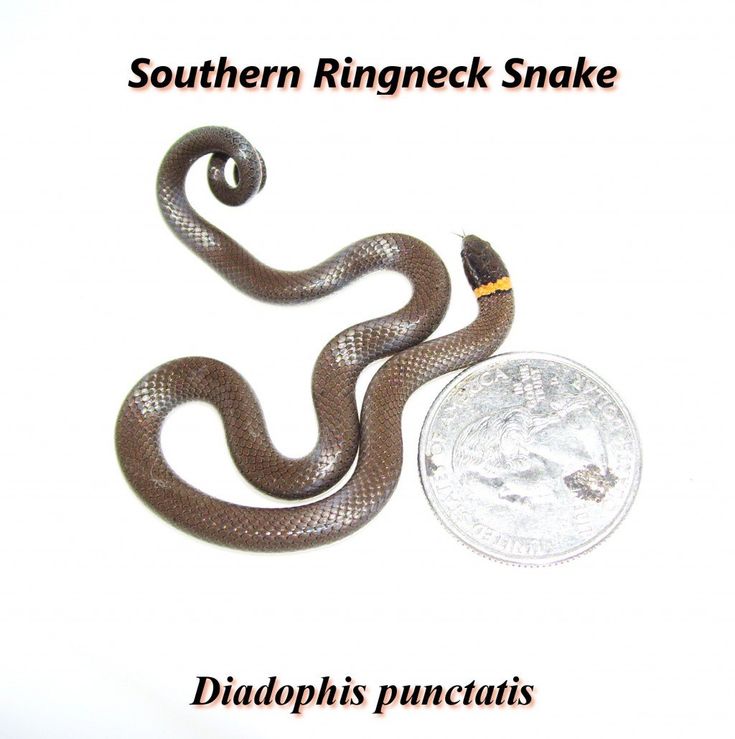
Food and Water
Garter snakes benefit from a varied diet to ensure proper nutrition. Juvenile snakes can eat a combination of feeder guppies, minnows, earthworms and fish fillet pieces; feed the juvenile snakes every other day.
Mature snakes should eat small rodents, such as mice or pinkies, but they only need food once a week. Avoid feeding your snake live mice to prevent any injuries to the snake. When using frozen rodents, let them defrost at room temperature. Avoid direct heating sources, such as microwaves, as they can cause the rodent to burst. You may also place small goldfish in your snake’s water bowl.
Garter snakes are semi-aquatic, meaning they need water for swimming and drinking. Keep a large bowl of clean, chlorine-free water so the snake can soak itself. Change this water daily.
Lighting and Temperature
An important part of your garter snake’s home is the temperature. Set up a temperature gradient in the tank with a cooler end at 75 degrees Fahrenheit and a warmer end at 85 degrees. Give your snake a basking area of 95 degrees. Warm rocks in the tank make excellent places for your garter snake to curl up. A heat gradient and basking area help mimic the temperature changes that a snake would naturally experience and will help them digest their food.
Give your snake a basking area of 95 degrees. Warm rocks in the tank make excellent places for your garter snake to curl up. A heat gradient and basking area help mimic the temperature changes that a snake would naturally experience and will help them digest their food.
Keep the lights on for eight to 12 hours during the day. A heat lamp is necessary, as it provides a properly warm and comfortable environment for your garter snake. However, keep in mind that heat rocks can burn the snake’s skin and should be avoided. At night, you can use infrared or nocturnal lights.
If you can control the humidity of the terrarium, keep is between 40 to 60% and slightly higher when the snake is shedding.
Garter Snake Substrate
Substrate offers not just a crawling surface but also a place for your snake to burrow when they need the need to hide. Use a deep substrate, such as coconut fiber bedding, sphagnum moss or reptile bark. Keep the substrate dry to prevent sores or skin blisters from forming. Shredded paper goods, such as paper towels, newspapers or readily available recycled paper products, will also suffice to keep your pet snake healthy.
Shredded paper goods, such as paper towels, newspapers or readily available recycled paper products, will also suffice to keep your pet snake healthy.
To help your snake feel safer, provide small climbing toys and foliage for exercise and hiding spots.
Soiled bedding should be spot-cleaned daily. Thoroughly disinfect the tank and furnishings once a week by scrubbing with a 3% bleach solution and rinsing with water until the bleach smell is gone. Dry the tank and furnishings and add fresh substrate.
Garter Snake Handling and Temperament
Once you establish a home where your garter snake is sheltered, well-fed, hydrated and kept at a well-regulated temperature, it’s now time to get to know your pet.
Most captive-bred snakes have gentle dispositions and don’t mind being handled. Let your friend slithery on your hand and get used to you before picking it up. Approach your snake from the side rather than grabbing from the top so it doesn’t feel threatened. Garter snakes need support while being held since they don’t have the strength that constrictors possess.
Garter snakes need support while being held since they don’t have the strength that constrictors possess.
Occasionally, garter snakes may have a snappish disposition and may try to defend themselves with a nip or spraying musk. However, most snakes soon calm down with frequent, gentle handling. Musk is not harmful and is easily washed off.
What Do Baby Garter Snakes Eat? Oh!
There are many species of snakes classified under the umbrella term “garter snakes”, but the most popular species of pet garter snake is the Eastern garter snake (Thamnophis sirtalis sirtalis), which is a subspecies of the common garter snake (Thamnophis sirtalis).
Many garter snakes have similar diets. They eat a variety of small fish, worms, and cut-up chicken breast or tilapia. When they get older, baby garter snakes will also eat pinkies or newborn mice.
Table of Contents
What Do Baby Garter Snakes Eat?Baby garter snakes eat guppies, earthworms, or nightcrawlers, and cut-up plain chicken or tilapia. Contrary to popular belief, they do not eat feeder crickets or insects other than worms. Food may need to be cut up to make it small enough for a very young baby garter snake. Older babies can eat pinkies or newborn mice. Make sure water’s always available.
Contrary to popular belief, they do not eat feeder crickets or insects other than worms. Food may need to be cut up to make it small enough for a very young baby garter snake. Older babies can eat pinkies or newborn mice. Make sure water’s always available.
Main Foods for Baby Garter Snakes
What Do Baby Garter Snakes Eat
According to Reptiles Magazine, newborn baby garter snakes need food items like guppies, cut-up earthworms, or other cut-up foods packed with protein like white meat chicken, chicken hearts, or tilapia fillets.
Even cut-up thawed pinkie mice may tempt a finicky baby garter snake’s appetite. Feed little and often, as opposed to just giving one large meal a week.
Basically, feed as much as the baby will eat, which maybe twice a week or every other day.
Guppies or earthworms need to be kept alive and be freshly killed so they are at their peak of nutrition for the growing baby garter snake. This means keeping an aquarium just for feeder guppies.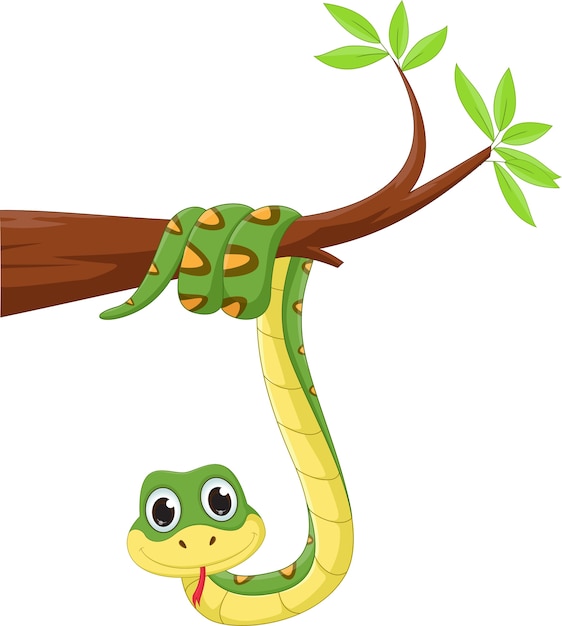
Feeder guppies are much less expensive than the fancy guppies sold as pets in pet stores. Never feed goldfish or rosy red minnows because they contain an enzyme called thiaminase which could kill the snake.
Chop up any food item into tiny pieces. Scissors used for cutting herbs can make the job go faster. Dust with vitamin or calcium powder.
It’s best to give one or more food items each meal for a baby garter snake to see which food the snake prefers. Hopefully, the snake will eat everything. This way, it will get a wide variety of nutrients.
Feeding Pinkies
Garter snakes eat mice and other rodents
In the wild, garter snakes often eat mice or other small rodents. They also eat slugs, leeches, frogs, and newts, but these are often impractical for many snake keepers to get.
Feeding pinkies is often less time-consuming and takes up less space than keeping an aquarium full of guppies or a plastic bin full of earthworms.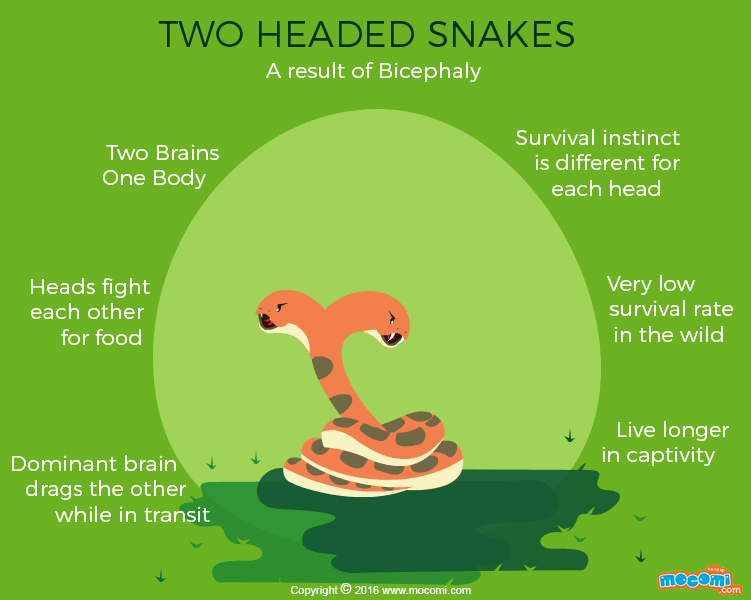
When the baby garter snake is a few months old and larger, he or she can start eating larger prey like newborn mice or pinkies. Pinkies can be purchased live at pet stores or frozen.
They need to be thawed before giving them to your snake. The pinky may need to be cut up into parts small enough for a baby garter snake.
Frozen pinkies need to be thawed to room temperature. Running the pinkies under warm water helps speed the thawing process along.
Never use a microwave, as the results are inedible, even to a snake.
Pinkies should be dusted with calcium powder to combat metabolic bone disease, caused by a lack of Vitamin D3 in the diet, which leads to calcium deficiency.
The Importance of Water
Garter snakes need water and often soak in water bowls as pets
Baby garter snakes dry out very easily, even under conditions where adult snakes thrive. Make sure there’s water in the baby snake’s enclosure all the time.
Make sure there is a bowl or at least a dish of water in the enclosure. Spraying the inside of the tank with water helps to keep the enclosure humid enough to help the baby not dry out.
Garter snakes tend to soak in their water bowls when they are about to shed, so if you see your baby garter snake taking a bath, do not be alarmed.
The water needs to be changed more than once a day when snakes are soaking because they will poop in the water. Change the substrate around the water bowl frequently as it may get soaked.
Baby Garter Snake Diet
Baby garter snakes need a moist little cave-like structure inside of their tanks or enclosures. These are also called humid hides since the snake can retreat there to hide.
This can be a small plastic tub with a hole cut out of the lid for the baby snake to slither in and out of. Inside of the tub should be moist substrate like moistened moss.
When the baby snake feels too hot and dry, he or she can rehydrate quickly in the humid hide.
Keep the hide in the middle or warm end of the enclosure.
Reality Check: Baby Garter Snakes Die Easily
Garter snakes give birth and can have up to 40 offsprings at once
Despite the best of care, your baby garter snake may still die. This, however, doesn’t mean that you’re bad as a pet parent.
Garter snakes give birth compared to their counterparts that lay eggs. Female garter snakes can birth up to 40 babies.
They have lots of babies to make sure at least one survives to breed and keep the species going. Unfortunately, that means the babies are not born equally healthy.
According to the Minnesota Department of Natural Resources, over half of all baby garter snakes die before reaching a year old.
For these reasons, it’s best to get an adult garter snake for a pet rather than a baby, if possible. Even though an adult might be less cute than a baby garter snake.
They still make fascinating companions. With luck, your snake will live ten or fifteen years.
Frequently Asked Questions About What Baby Garter Snakes Eat
Can I Take a Baby Garter Snake from the Wild?
Although they can be some of the easiest snakes to find in the wild and may even enter your home looking for prey, you should never take a baby garter snake from the wild for a pet. This is illegal in America. Wild snakes, even babies, bite and maybe sicklier than captive-bred snakes.
Do Baby Garter Snakes Eat Crickets?
Although they will eat worms, garter snakes do not like to eat other kinds of insects. They may occasionally eat feeder crickets, but much prefer other kinds of food.
How Often Do Baby Garter Snakes Drink?
All garter snakes, babies or adults, need to drink every day. They need constant access to clean, chlorine-free water in a bowl. They cannot use a water bottle that other pets like rabbits, hamsters, or guinea pigs use.
The Least You Need to Know
Baby garter snakes need to eat every other day or at least twice a week. They should eat guppies or cut-up earthworms, nightcrawlers, pinkie mice, tilapia, chicken breast, or chicken hearts.
Food should be dusted with multivitamin or calcium powder. Never feed crickets or other species of fish.
Keep a water bowl filled with clean water at all times.
The Whole Truth About Snake Sex: It's Not What We Thought
- Sandrine Serstimont
- BBC Earth
Sign up for our 'Context' newsletter.
Image copyright Sven Zacek/naturepl.com
Scientists are accustomed to thinking that male snakes play a dominant role in sexual intercourse, and females are mostly passive, but how wrong they were!
When Jesús Rivas took the female anaconda out of the mating ball of snakes, he was in for a surprise.
The bloated body of the anaconda indicated that it was extremely full, and Rivas believed that it was about to burp - snakes often burp some of the food if they have eaten too much or are stressed.
And what did Rivas see? Instead of the usual prey - a rat or other rodent - the tail of another snake appeared from the anaconda's mouth.
"It was also an anaconda," says Rivas, a herpetologist from Las Vegas. "And judging by the sexes, it was a male."
- Who has the largest spermatozoa on the planet
- Do animals enjoy sex?
- Octopus sex. How not to be eaten by a friend
- Wolf spiders eat their older females
A female anaconda swallowed one of her recent sexual partners - a sexual behavior known as "sexual cannibalism".
And this astounding case has only added evidence to a growing body of evidence that we have misunderstood how sexual intercourse occurs in snakes.
Photo copyright, Franco Banfi/naturepl.com
Photo caption,Green (giant) anaconda (Eunectes murinus)
Among anacondas, only females engage in sexual cannibalism.
Previously, scientists believed that female snakes were in a subordinate position during courtship and mating, but now it is clear that their role is very significant and even dominant.
Rivas suggests that the misconception stemmed from old research done by male scientists. Played a role, so to speak, gender solidarity.
Female snakes are physically large and powerful, so it's really not surprising that they can overpower and even eat a male. In many animals, the picture is reversed - it is the males that are larger, but in the case of snakes, everything is not so.
Female anacondas are on average 4.7 times larger than males. Among land vertebrates, this is the most impressive difference between the sexes.
- Move like a snake: it means - inexplicably fast
- Folk remedy for snakebite - another myth?
- Eating one's own flesh.
 Who is doing this?
Who is doing this?
The reason that males are often larger than females is that it helps them to win the fight for the female and control the territory, driving off rivals. And this is exactly the case in lizards, birds and mammals.
But the behavior of male snakes destroys this stereotype. They don't care about territorial control, and during courtship, they just push the rival away and deftly use their tail to get to the female's genitals. So for a male snake it is not at all important to be big.
Why do females need large forms? Large size improves fertility, and the offspring are larger, which increases the chances of survival. Males seem to understand this, preferring to court larger females.
But how do they make their choice? Snakes do not have very good eyesight, and it is not yet clear how a male from afar can understand how attractive a female is.
Photo copyright, Tony Phelps/naturepl. com
com
A male common viper (Vipera berus) guarding a female from other males
Perhaps the answer lies in the fact that courtship is actually initiated not by the male, but by the female. When a female snake comes out of hibernation and sheds her skin, she secretes pheromones and thereby attracts males to her. "The males just go crazy," Rivas testifies.
These pheromones seem to carry information about how the female looks. Michael Lemaster of Western Oregon University has found evidence that the scent given off by a female garter snake can convey information about her physical size.
And although males pay attention to smaller females, as soon as a large snake is nearby, they switch to it.
Another aspect of the sex life of snakes that we have been misled about is mating.
Photo author, Franco Banfi/naturepl.com
Photo caption,Green (giant) anaconda (Eunectes murinus)
It was believed that the norm for snakes is polygyny, when one male has sexual relations with several females. But even here everything was not so simple.
But even here everything was not so simple.
An absolutely common thing is when several males court one female. On the island of Borneo, for example, it was possible to photograph a female paradise decorated snake, which entered into a relationship with four males.
The males relentlessly followed the female as a detachment of her admirers for 30 minutes. According to the researchers, during this sex journey, they competed for the best position for sexual intercourse.
Image copyright Tim Laman/naturepl.com
Photo caption,Paradise Ornamented Serpent (Chrysopelea paradisi)
Skip the Podcast and continue reading.
Podcast
What was that?
We quickly, simply and clearly explain what happened, why it's important and what's next.
episodes
End of Story Podcast
Usually, the female giant anaconda lies quietly in the mud or shallow water while the males try to find her.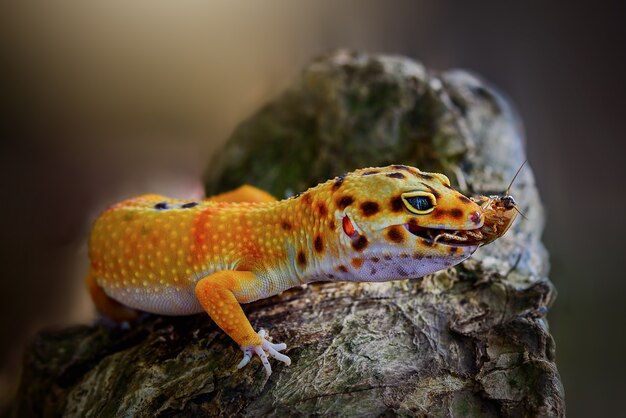 Sometimes a dozen promising partners come to meet each other, wrapping themselves around the female - such "orgies" last up to a month.
Sometimes a dozen promising partners come to meet each other, wrapping themselves around the female - such "orgies" last up to a month.
Rivas recalls watching a male anaconda doggedly pursue a large female, ignoring any other opportunity to mate, and eventually had sexual intercourse with her. "It was like true love," says Rivas.
With garter snakes, courtship can take even more extreme forms. In the Canadian province of Manitoba, in the area between Lakes Winnipeg and Manitoba, one can witness how one female is pursued by up to a hundred males, from which a large mating ball is formed.
Often in crevices one can observe several such balls with thousands of snakes at once. True, this does not happen everywhere with garter snakes. You won't see this in the continental United States, Rivas says. It is not very clear why, but it seems that the environment and geography strongly influence the behavior of snakes.
The problem with these mating cups, Rivas says, is that it's very difficult for scientists to determine which males end up producing offspring. One thing is clear - since there are many males in such "orgies", the female must make a choice.
One thing is clear - since there are many males in such "orgies", the female must make a choice.
Image copyright Francois Savigny/naturepl.com
Image captionAnaconda mating ball (Eunectes murinus)
"In the end, it's the female who decides when to open her cloaca to the male," says Lemaster, who studies garter snakes . Females use genital contraction to control the duration of sexual intercourse and may interrupt it if they consider that the male is not coping with his duties.
It is still not completely clear what exactly females are guided by when choosing one or another male. Scientists suggest that after all, either the strongest or the most persistent is selected to ensure healthier offspring.
However, perhaps another element plays a role in the process of "female" choice. According to Rivas, females use their sense of touch to distinguish between males. To understand how this happens, video filming of processes within the mating group can help.
In any case, it is clear that females do not necessarily choose only one "groom". Often they have sexual intercourse with several males. And contrary to previous beliefs, males usually stay with one female.
image copyrightHuw Cordey/naturepl.com
Image caption,Garter snakes (Thamnophis sirtalis parietalis) in mating season
"It takes a lot of effort for a male to find and win over a female," explains Rivas. In his opinion, polyandry (when each of the females has sexual intercourse with several males) is inherited in snakes.
How did it come about? One suggestion is that sex with multiple males helps the female build up a supply of seminal fluid that she can use to feed.
But Rivas still believes that sexual intercourse with many males, the competition of different sperm provide some guarantee of healthier offspring.
Females can store semen in the reproductive tract for months or even years, and it remains competitive even when fresh.
Photo copyright, Huw Cordey/naturepl.com
Photo caption,Garter snakes (Thamnophis sirtalis parietalis)
Does all this mean that the role of males in mating snakes is very limited and comes down to a very specific duty?
Female garter snakes that have just had sexual intercourse secrete a special pheromone that lets the males know: don't waste time, you are no longer interested in me.
However, some males are also quite active. Let's say males of the same garter snake secrete some substance that blocks the female's genital tract after intercourse. This so-called copulatory plug is apparently a way to prevent a female from having intercourse with other males.
These plugs are not 100% effective, they often just fall out. But they may have another function - they may be a store of sperm, which is gradually released into the body of the female, as the cork dissolves.
The fact that, say, a male anaconda tries to stay as long as possible with his "lover" can be explained by the fact that he is trying to be the last to have sexual intercourse with her. This increases the chances that it is his sperm that will win in the fight for offspring.
This increases the chances that it is his sperm that will win in the fight for offspring.
However, returning to the beginning of our story, it should be noted that staying too long with a friend is also dangerous - and even deadly: she can just eat.
image copyrightSven Zacek/naturepl.com
Image caption,Common snakes (Natrix natrix) - male and female
Of course, female anacondas do not always eat their sex partners, and it is not clear how they decide whether to do so or not. "It would be interesting to know if there is something about a particular male that makes him more vulnerable to that outcome," Rivas muses.
Sexual cannibalism helps female anacondas get additional nutrients, which is very useful, considering that during pregnancy they starve for seven months.
There are still many mysteries in the reproductive behavior of snakes. Partly because snakes themselves are mysterious creatures and lead a lifestyle hidden from human eyes.
But from what we know, we can conclude that the mating behavior of snakes is very similar to spiders. Both in those and in others, the females are larger than the males, and there, and there the males compete fiercely for the right to fertilize the female, and the females are able to choose with whom to have sexual intercourse and with whom not.
Finally, in both snakes and spiders, the male runs the risk of being eaten by his own mate. Right after sex.
Read more of these articles in English at BBC Earth .
How do snakes give birth to their offspring? When snakes lay their eggs
Characteristics and structure of snakes
Until recently, 3200 species of snakes were known to science, and only 410 species are poisonous. The most interesting and unusual feature of cold-blooded animals is the unique body structure. In length, an adult can grow up to nine meters. The smallest snakes grow up to 10 cm. The same fluctuations apply to the weight of representatives of the scaly order, starting from 10 g and reaching 100 kg. The main distinguishing feature of males is their long tail; they also grow smaller.
The same fluctuations apply to the weight of representatives of the scaly order, starting from 10 g and reaching 100 kg. The main distinguishing feature of males is their long tail; they also grow smaller.
The variety of body shapes is amazing. There are individuals that have a long and thin body, or, conversely, a short and thick one. Those snakes that live near the sea have a flattened appearance and often resemble a ribbon. The skin of cold-blooded animals is mostly dry, completely covered with scales or peculiar shields. In different parts of the body, the surface is different, for example, on the sides and on the back, the scales are small and resemble tiles (since they overlap each other). The belly of most snakes is "dotted" with wide semicircular plates.
Serpent eyelids are motionless and seem to be able to hypnotize prey. Reptiles never blink and even sleep with their eyes open. The unique structure of the skull allows even the smallest individuals to open their mouths enough for a small rabbit to fit into it. This is because the upper jaw is connected to adjacent bones and is mobile, while the elements of the lower jaw are connected by a ligament that is stretched.
This is because the upper jaw is connected to adjacent bones and is mobile, while the elements of the lower jaw are connected by a ligament that is stretched.
Due to the unusual body, the structure of the organs is also unique: they are all elongated and elongated closer to the head. The skeleton has a total of about 200-400 vertebrae, each of which is mobile and connected by ligaments. The snake slides along the ground due to the movement of the shields located on the belly. Thanks to the keratinized layers of the epidermis, cold-blooded animals move quickly without difficulty.
Despite all the features of snakes, reptiles have poor eyesight and hearing. In return, nature endowed them with a wonderful sense of smell and touch. Not the last role in orientation in space is played by the tongue, which is forked at the end. Many researchers call it "sting". Opening its mouth, the snake catches air with its tongue and various particles and elements of the atmosphere stick to it, then the reptile brings the organ to a certain place located in the mouth and smells and tastes.
In most cases, snakes use their venom in self-defense, it is also one of the ways to kill the victim.
Internal organs
Elongated and asymmetric. In most individuals, the right lung is more developed or the left is completely absent. Some snakes have a tracheal lung.
The heart is located in the cardiac sac. There is no diaphragm, which allows the heart to move freely, escaping from possible damage.
The spleen and gall bladder function to filter the blood. Lymph nodes are absent.
The esophagus is very powerful, making it easy to push food into the stomach and then into the short intestine.
Females have an egg chamber that acts as an incubator. It maintains the moisture level in the eggs and ensures the gas exchange of the embryo.
Senses
To distinguish odors, a forked tongue is used, which transfers odors to the oral cavity for analysis. The tongue is constantly moving, taking particles of the environment for a sample. In this way, the snake can detect prey and determine its location. In water snakes, the tongue picks up odor particles even in water.
In this way, the snake can detect prey and determine its location. In water snakes, the tongue picks up odor particles even in water.
The main purpose of vision is to distinguish movement. Although some individuals have the ability to get a sharp image and see perfectly in the dark.
The organ of heat sensitivity is highly developed. Snakes detect the heat that mammals radiate. Some individuals have thermolocators that determine the direction of the heat source.
Ground vibrations and sounds are distinguished in a narrow frequency range. Parts of the body in contact with the surface are more sensitive to vibration. This is another ability that helps with tracking down prey or warning the snake of danger.
What do snakes eat?
All snakes are carnivores without exception. Their diet includes various types of animals, the size of which depends primarily on the size of the predator itself. The main food of snakes is frogs, rodents, lizards, their own relatives, including poisonous ones, as well as some types of insects. The ability to climb trees gives snakes the ability to destroy bird nests by eating chicks or eggs.
The ability to climb trees gives snakes the ability to destroy bird nests by eating chicks or eggs.
Snakes do not feed every day, and if they fail to get prey, they can starve for a long time. In the presence of water, snakes can go without food for up to several months.
All snakes track prey patiently, hiding among the leaves of trees, or on the ground, along the paths leading to a watering hole. Snakes swallow prey from the head, not from the tail, fearing the sharp teeth of the victim, who may still be alive. Non-venomous snakes, before swallowing the victim, squeeze it with the rings of their body so that it cannot move.
The duration of the digesting prey depends on its size, the state of health of the snake, the ambient temperature and usually lasts from 2 to 9days. Digestion requires higher temperatures than other life processes. To speed up the process, the snake exposes the filled belly to the sun, leaving the rest of the body in the shade.
Hermaphrodites
They are rare among snakes, but they do happen. As a rule, we are talking about the island botrops, which inhabits mainly South America. Surprising is the fact that among individuals of the same species, both heterosexual and hermaphrodite can come across. The latter have sexual characteristics of both male and female. Therefore, one snake is enough for reproduction.
As a rule, we are talking about the island botrops, which inhabits mainly South America. Surprising is the fact that among individuals of the same species, both heterosexual and hermaphrodite can come across. The latter have sexual characteristics of both male and female. Therefore, one snake is enough for reproduction.
But this is not the only interesting fact about the life of reptiles. Some females manage to lay unfertilized eggs, from which offspring successfully hatch. This method of reproduction is quite rare and is called "parthenogenesis".
Traditional egg-laying
Scientists recently estimated that only about 70% of snakes lay eggs. All other species are viviparous or ovoviviparous. Egg laying occurs after copulation, which occurs in all reptiles in the same way. After fertilization, eggs are formed in the body of the female, and after a while she lays them in the nest. Until the moment the offspring appears, the snake sits motionless near them, protecting the cubs from potential enemies. In this state, the female is hungry and very aggressive. Any meeting with a snake hatching babies can end in failure.
In this state, the female is hungry and very aggressive. Any meeting with a snake hatching babies can end in failure.
Before giving birth, snakes carefully choose a place to form a nest. For these purposes, heaps of rotting organic debris are ideal, which can protect future cubs from bad weather. The period of incubation of eggs varies from one to several months, depending on the variety of cold-blooded.
Reproduction by ovoviviparity
This hard-to-pronounce word was coined by zoologists who watched snakes give birth. With this type of reproduction, the female keeps the eggs in herself until the cubs hatch from them. The mother's circulatory system penetrates the egg, due to which the fetus is nourished until the moment of birth.
All boas, asps, some types of vipers are ovoviviparous. This method of procreation is very convenient for snakes, since the female at this time can hunt and defend herself. Reptiles that lay eggs in the nest are deprived of this opportunity. So, for example, the king cobra is forced to tirelessly be near the eggs until the offspring are born.
So, for example, the king cobra is forced to tirelessly be near the eggs until the offspring are born.
The development of ovoviviparity and viviparity began in the northern latitudes, since the snake is a cold-blooded animal and does not have the ability to warm eggs with the heat of its body. In the case of the development of cubs in the womb, they automatically have the temperature of the mother's body, which makes it possible to develop normally even in adverse weather conditions.
What does a snake's nest look like?
Closest to reptiles is the class of birds. Therefore, it is not surprising that both of them reproduce by laying eggs.
King cobra nest
There are not very many snakes that build their own nests. One of them is the Hamadryad, or king cobra. It lives in the tropical regions of Southeast and South Asia, where heavy rainfall occurs. To prevent the nest from being flooded, it is built on a small ledge or hill.
Eggs are laid only one month after mating. One individual at a time produces up to forty eggs. Little cobras are born after a hundred days. At this time, the female constantly monitors them, sometimes the father also participates in the process.
One individual at a time produces up to forty eggs. Little cobras are born after a hundred days. At this time, the female constantly monitors them, sometimes the father also participates in the process.
King cobras are the largest known venomous snakes. At the time of "hatching" they are extremely dangerous. They hunt down anyone who is near the nest and can attack without warning.
Snake oviposition
Most snakes lay their eggs in burrows or hollows, under stones or under fallen trees, without showing any further care for their offspring. But among reptiles there are more “responsible” parents who do not leave their eggs with embryos to their fate. Among them are some species of snakes and crocodiles.
For example, a female python wraps several body rings around her clutch, and the eggs, as long as they are hidden under a kind of mother's cap, are completely safe.
In addition, in such maternal "hugs" it is much warmer (the temperature under the "hood" is 10-15 °C higher than the ambient temperature), which favorably affects the development of embryos in eggs and accelerates the hatching of small pythons.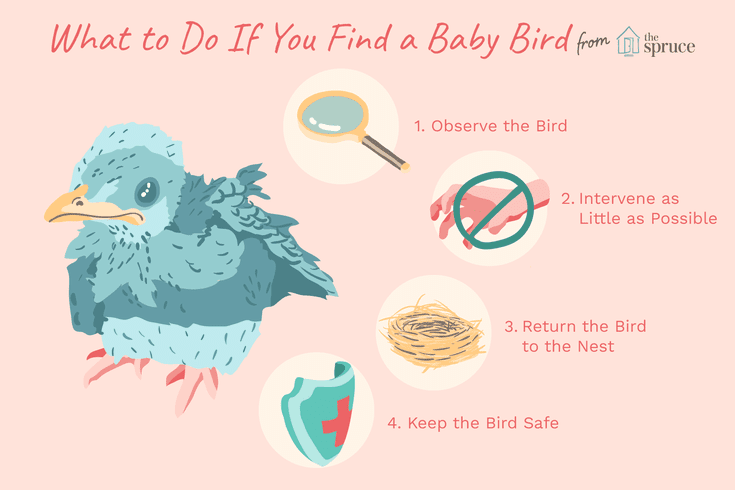
It turns out that in the mother snake, the circular muscles are continuously contracting and the heat necessary for the development of the embryo is released. In nature, pythons lay their eggs mostly in the rotten hollow trunk of a huge tree and curl up around the masonry there.
Some types of poisonous snakes also protect their eggs, such as cobra, spectacled snake, krait, bushmaster. Before laying their eggs, the king cobra rakes the fallen leaves into a large pile. After such preparations, she lays 20-30 eggs on top of the resulting nest.
At this point, the cobra does not relieve itself of parental duties and remains near the clutch until the small cobras hatch from the eggs. She jealously guards the nest with future offspring, and it is extremely dangerous to appear near her nest during this period - the bite of a cobra is fatal.
The Indian cobra lays her eggs in one of the holes dug by rodents, and she, like the king cobra, guards the clutch until her offspring hatch. Sometimes mother cobras are helped to guard nests with clutches of cobra fathers.
Sometimes mother cobras are helped to guard nests with clutches of cobra fathers.
Types of snakes
This is a very large family. It is divided into three groups: real, false snakes and snakes with copperheads. Consider first the genus Natrix. These are real snakes. There are also hundreds of varieties. The most common of them is Natrix natrix, or the common one. It is found throughout Europe (except the Far North). It is in this form that we form an idea of \u200b\u200bwhat it really is. The photo of this small snake with yellow "ears" serves as a "identikit" for the whole family. Wrong opinion! There are species of snakes without yellow spots - for example, Natris tesselata, which lives in the reservoirs of Western Europe, Moldova and Ukraine. Not to mention snakes, rather large snakes, and copperheads. But they also belong to the snakes. Meet among this diverse family and poisonous species. It's just that their secret is not dangerous to humans and, in the worst case, can only lead to swelling around the bite site.
Common grasshopper
Fairly common inhabitant of garden plots. The snake is not poisonous, cautious enough, when meeting with a person it always tries to run away. It is quite easy to distinguish from other snakes due to the bright yellow markings on the head.
The snake has quite interesting ways of protection, if it is caught, it begins to squirm, hiss, puff up, if this does not help, it can pretend to be dead and secrete a smelly liquid from its glands. Sometimes it can bite, but the bite is not poisonous. Well tamed and kept in captivity.
How to tell a snake from a viper
Two bright orange or yellow spots on the sides of the head are not the only distinguishing mark. In snakes, at least real snakes, as well as some false ones, the pupils are round. Whereas in vipers - slit-like, vertically located. Again, this difference is the rule only in our country. In the tropics, there are snakes with slit-like pupils. The color of the viper - black or dark gray - can be found on the backs and sides of its non-venomous counterparts. So what types of snakes are found in our country? Natrix is the most widespread in the European part of Russia. The northern border of its range is the latitude of Vologda. The water one is more thermophilic. In our country, it is found only in the southern Volga region, Kuban and on the Don. And, finally, Rhabdophis tigrina, tiger snake, is found in Primorsky Krai. This species deserves a special mention. This is a conditionally poisonous snake 110 centimeters long. If it happens to bite a person with short front teeth, then the wounds are small and there are no symptoms of poisoning. But putting a finger in the mouth of a tiger snake is not recommended - in the literal sense. In the depths of his throat (on the back of the upper jaw) there are also poisonous teeth. The secret causes poisoning that is not inferior in severity to the consequences of a viper's bite.
So what types of snakes are found in our country? Natrix is the most widespread in the European part of Russia. The northern border of its range is the latitude of Vologda. The water one is more thermophilic. In our country, it is found only in the southern Volga region, Kuban and on the Don. And, finally, Rhabdophis tigrina, tiger snake, is found in Primorsky Krai. This species deserves a special mention. This is a conditionally poisonous snake 110 centimeters long. If it happens to bite a person with short front teeth, then the wounds are small and there are no symptoms of poisoning. But putting a finger in the mouth of a tiger snake is not recommended - in the literal sense. In the depths of his throat (on the back of the upper jaw) there are also poisonous teeth. The secret causes poisoning that is not inferior in severity to the consequences of a viper's bite.
Copperhead
It belongs, like snakes, to the same family of snakes. The snake is not poisonous and is not dangerous to humans. Has a body no longer than 70 cm.
Has a body no longer than 70 cm.
Just like already, when meeting with a person, it tries to quickly leave the meeting place, defending itself, it can bite, the bite is not dangerous, except for two punctures on the skin.
The same as it can defend itself, and it does it quite aggressively, curling up into a ball and making a throw in the direction of the threat, it similarly emits a smelly liquid.
In many regions of Russia and in the world, the species is included in the Red Book, trapping and destruction is prohibited.
The photo shows a red or brown snake, only 50 cm long, with small dark spots along the back. The copperfish lives in clearings and forest glades, in meadows and in the steppes. Its habitat is from Scandinavia and throughout Europe. We have it in the southern part of the country.
Viperophobes mercilessly kill copperheads, confusing them with poisonous snakes. And in vain. Copperheads themselves eat vipers, and sometimes attack adults. However, they do have poison. But it only works on cold-blooded ones - the bite of a copperfish kills lizards in a matter of seconds. But for humans, it is absolutely harmless. False snakes of Latin America - mussurans - feed exclusively on poisonous snakes. This quality is used by farmers in Brazil and Argentina. They breed Mussuran to protect their dwellings and herds from poisonous snakes, which this false snake eats.
However, they do have poison. But it only works on cold-blooded ones - the bite of a copperfish kills lizards in a matter of seconds. But for humans, it is absolutely harmless. False snakes of Latin America - mussurans - feed exclusively on poisonous snakes. This quality is used by farmers in Brazil and Argentina. They breed Mussuran to protect their dwellings and herds from poisonous snakes, which this false snake eats.
Viviparous species
Regardless of how snakes reproduce, their embryos almost always develop inside the egg, feeding on its environment. In most cases, this happens in a nest or other hidden place. But sometimes the young develop directly inside the female and are born while hatching from the eggs. At the same time, they are quite independent from the first days of life.
Viviparous snakes in the classical sense are also found in nature. These mainly include inhabitants of reservoirs, as well as some boas and vipers. In this case, the embryo breathes and feeds through a single circulatory system with the mother.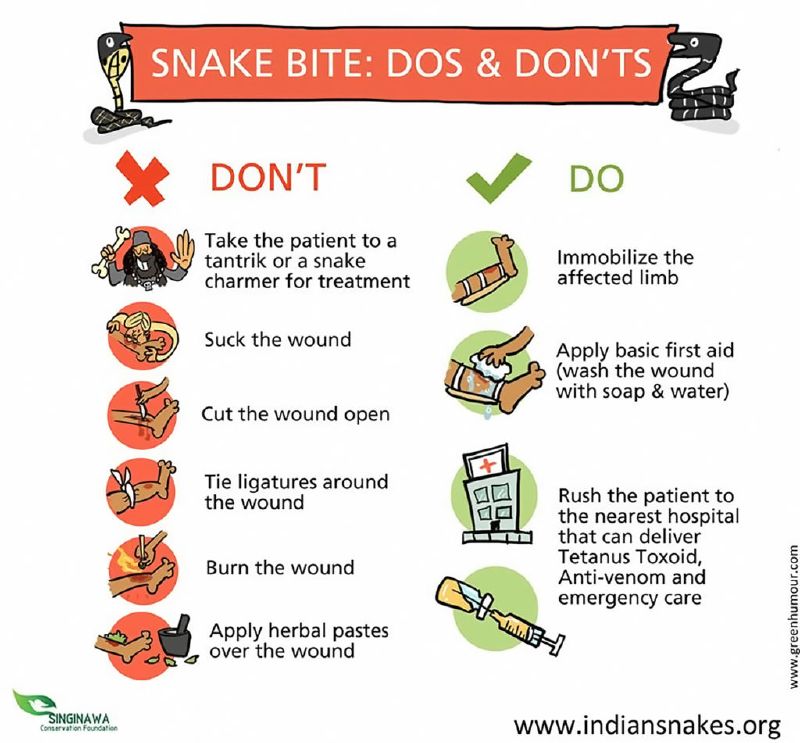
Let's just say that snakes are no longer viviparous, but ovoviviparous. To explain the principles of this type of birth of a child, it is necessary to describe the process of maturation of the embryo itself. From the very beginning, it always matures at the parent. After that, eggs may be born, which will continue to develop in the external environment.
Oviparous development is characterized by the development of an egg inside the female, and after this process reaches its peak, a snake is born, which hatches from the egg in the mother's body. At this time, the egg itself comes out. At the same time, such animals remain independent immediately from the moment they were born.
However, there are also truly viviparous snakes. As a rule, these are boas or vipers that live near water bodies. In this case, their child in the early stages of its development is fed from its parents through the placenta using a complex system of interconnected blood vessels.
That is, snakes reproduce in all three ways:
- laying eggs;
- ovoviviparity;
- live birth.
Mating process
The sexual maturity of most snakes occurs at two years and depends on the length of the reptile. As soon as the season approaches (and for snakes it begins almost after waking up from hibernation), males begin to actively look for a partner.
Do you know? Courtship is not an extra procedure. It allows you to recognize a partner of your own species. In some snakes, the movements may resemble dances, and some simply caress the back of the female with their chin. At the same time, they use a specific analyzer, “probing” the air with their tongue and thus obtaining microparticles of the substance left by the female. These components will tell if the male has a chance of intercourse.
At the end of courtship, the partners intertwine their tails and the males introduce the hemipenis into the female's cloaca. The copulatory organ in males is double and consists of hemipenis, which protrude from the cloaca.
The copulatory organ in males is double and consists of hemipenis, which protrude from the cloaca.
Since several males can curl around a female during intercourse, reptiles form balls. But only one male can fertilize a female, which, in addition to sperm, secretes a special substance that prevents fertilization by other males.
The female is capable of storing live sperm. This feature allows broods to be produced several times after a single copulation.
Carrying offspring
Viviparous snake embryos feed in the mother's body. Moreover, their main food is the yolk, which is formed in the oviducts. The fetus receives additional nutrition and oxygen due to the metabolic processes of the female body.
The embryo develops depending on temperature conditions. At an air temperature of + 26 ... + 32 ° C and humidity up to 90%, females bear babies for 35–39 days.
Important! If the weather is cold, then the pregnancy can be delayed for 3 or more months.
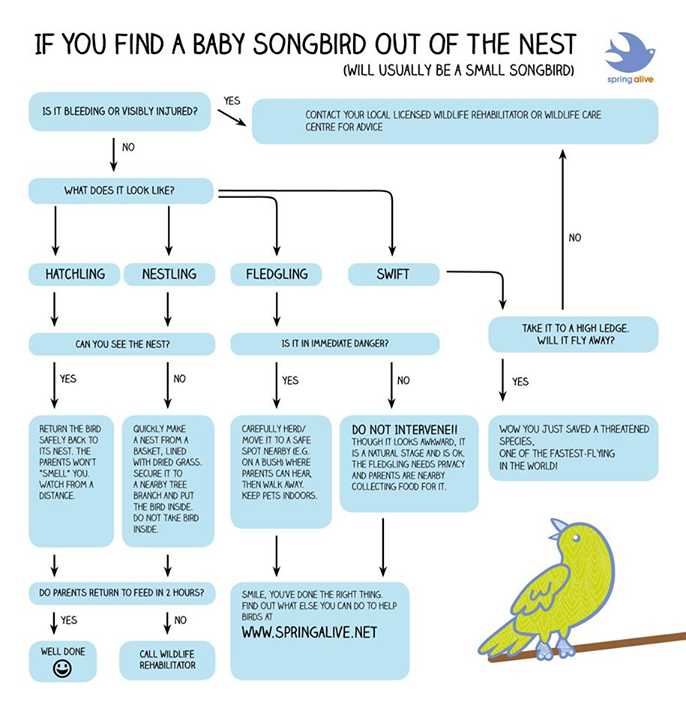
By the way, live birth is a positive thing, but for marine species it is a necessity. Indeed, in this case, the babies are always near the mother, and she can not be attached to one place and hunt anywhere and at any time.
Birth
Babies appear already fully viable, in a transparent leathery shell. Upon exiting, the shell immediately breaks. Females are indifferent to the babies born, and do not take part in their lives. However, serpents do not need maternal care, they can hunt from birth.
Description of the viper
The common viper belongs to the Viper family and is notable for its small size, about 72 cm and weighs no more than 200 grams. As a rule, males have a slightly shorter body length.
Appearance
- The head is characterized as round-triangular in shape, the nasal end is blunt and has a hole in the middle. It is covered with small scales or irregularly shaped scutes, while the temporal angles stand out noticeably, since paired poisonous glands are located here.

- The eyes are small, with pupils located strictly vertically. The viper has a very vicious appearance due to the fact that overhanging scales are located above the eyes, although this has nothing to do with any manifestations of the reptile's emotions.
- The upper jaws are short, but very mobile and armed with a pair of tubular poisonous fangs, as well as two pairs of small substitute teeth. Such teeth are also located on the pterygoid bones within the palate.
- The head is connected to the body with a sharp neck interception.
- The middle part of the body is both short and relatively thick, but the body further narrows sharply to the very tail. The tail can be described as short and blunt, in the form of a comma.
Vipers are distinguished by a wide variety of colors, although the main color is considered to be gray (in males) and brown (in females). In addition to the main colors, in nature there are vipers of this color:
- Black.

- Beige yellow.
- Whitish Silver.
- Olive brown.
- Copper red.
As a rule, in most varieties the body is "decorated" with various stripes, spots or patterns.
For example:
- There may be a zigzag stripe on the back.
- On the upper part of the head, one can see ornaments of various shapes, darker shades.
- On the sides of the head in the direction from the eyes to the mouth, there may be black stripes.
- Dark spots may be present on the sides of the body.
The black and reddish-brown vipers have no head or body markings. At the same time, the lower part of their body may differ in a lighter color.
Interesting to know! As a rule, albino vipers are not found in nature, compared with other snake species, in which the absence of the main body color is a frequent occurrence.
A different type of color of the viper is associated with remaining invisible against the natural background, regardless of habitat conditions.
Habitat
The common viper has a fairly wide range of habitat, so it can be found on the Eurasian continent, from Sakhalin, northern Korea, and northeast China to Spain and northern Portugal. On the territory of Russia, the common viper is distributed almost throughout the entire Middle lane, starting from the Arctic and ending with the steppe strip in the south. At the same time, populations, depending on the natural environment, are unevenly distributed:
- In conditions unfavorable for viper habitation, the density of individuals is up to 0.15 pieces per 1 km of the route.
- In the most favorable conditions for viper habitation, the density of individuals reaches 3.5 pieces per 1 km of the route.
Usually, under natural conditions, vipers are found on the outskirts of moss swamps, in forest clearings, in overgrown burnt areas, in clearings of mixed and coniferous forests, on the banks of rivers and various reservoirs. The viper is also found in the mountains, at altitudes up to 3 thousand meters.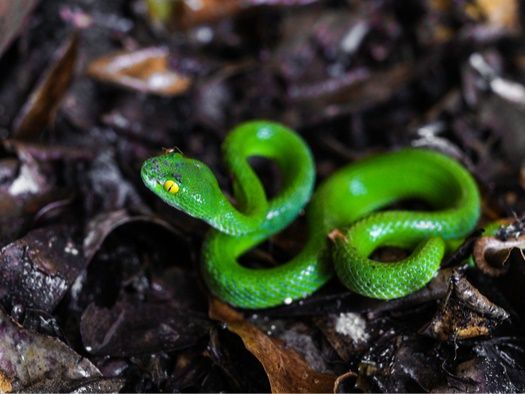
As a rule, vipers are sedentary and rarely seen more than 100 meters from their nests. With the onset of spring, some movements of adults over a distance of up to 5 kilometers are possible, while vipers can swim across fairly wide rivers and other bodies of water. Vipers are also found in cities and other settlements, where they can settle in the forest park zone, as well as in the basements of various buildings, in garden and other farmland areas.
How they reproduce
Somewhere in the 4th or 5th year of life, vipers will become sexually mature individuals. As a rule, these reptiles breed every year, with the exception of colder regions, where offspring are born once every 2 years. The mating season falls on the month of May and can last up to 3 weeks. During this period, vipers can be found both in pairs and in several individuals, twisted into a ball. Males determine the location of females by smell, while they arrange peculiar fights to win the sympathy of females. Most likely, this is some kind of ritual that has its own rules.
Most likely, this is some kind of ritual that has its own rules.
Males stand in front of each other, raising their heads and swinging them from side to side before pouncing on each other. They collide with their bodies and, as it were, intertwine with them, while each of the rivals tries to press the enemy to the ground, turning him over on his back. The most interesting thing is that they do not use their main weapons against each other, so in this confrontation they do not bite. The winner retains the right to fertilize the females. The mission of males at this stage ends, since the fertilized female will take care of her offspring herself. At the end of the mating season, the males retire and lead an isolated lifestyle.
Vipers belong to the viviparous representatives of this family, so the process of egg development takes place inside the females, after which the cubs are born ready for independent life. The number of embryos can range from 10 to 20, and not every egg produces offspring. Often, some of them freeze and then dissolve, so an average of about 10 kites are born. After mating, they are born about three months later, from mid-July to September. The cubs are a little over 15 cm long, while representing complete copies of their parents.
Often, some of them freeze and then dissolve, so an average of about 10 kites are born. After mating, they are born about three months later, from mid-July to September. The cubs are a little over 15 cm long, while representing complete copies of their parents.
Important to know! Viper cubs born into the world are distinguished by the fact that they are just as poisonous as their parents, so it is better to avoid them.
After a maximum of a couple of days, the young offspring begin to molt, after which it spreads in different directions in search of food. For the remaining time before the cold weather, young vipers actively grow, eating various insects and worms. They hibernate together with adults in their shelters.
Breeding frequency
Under natural conditions, the process of reproduction of snakes has a seasonal character - spring and autumn. In most cases, the mating season of reptiles is preceded by hibernation and dormancy.
In one year, females are able to give birth to about 100 babies, however, due to the fact that parents do not care for their offspring, most of the offspring die.
Partly refuting the generally accepted opinion that snakes lay eggs for reproduction, it can be noted that 30% of creeping reptiles are viviparous and ovoviviparous. The process of giving birth to babies in reptiles is quite interesting and unusual.
When planning to lay eggs or give birth to babies, the female instinctively looks for the safest and most comfortable place, because immediately after birth, the babies "enter" an independent life, without the support of their parents.
Lifespan of a snake
The lifespan of creepers varies from 20 to 30 years, but centenarians among them are quite rare. Most do not live to old age due to premature death from the attack of birds of prey, adverse environmental conditions.
Sources
- https://aquarium-fish-home.ru/reptilii/zmeya-opisaniestroeniepitanierazmnozheniefotovidyspyachkalinka/.












